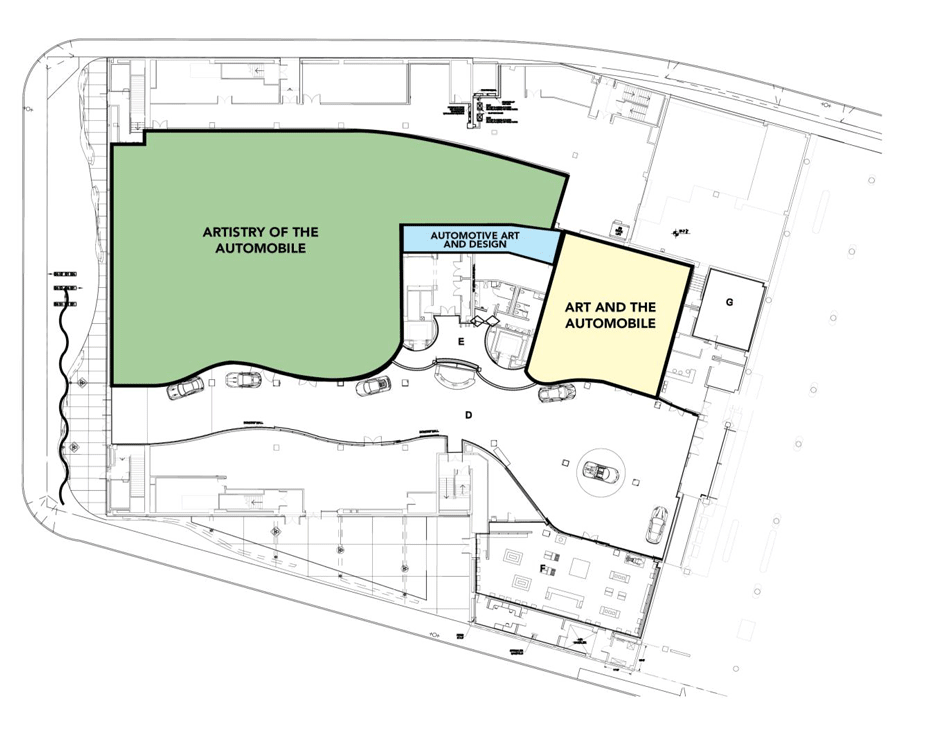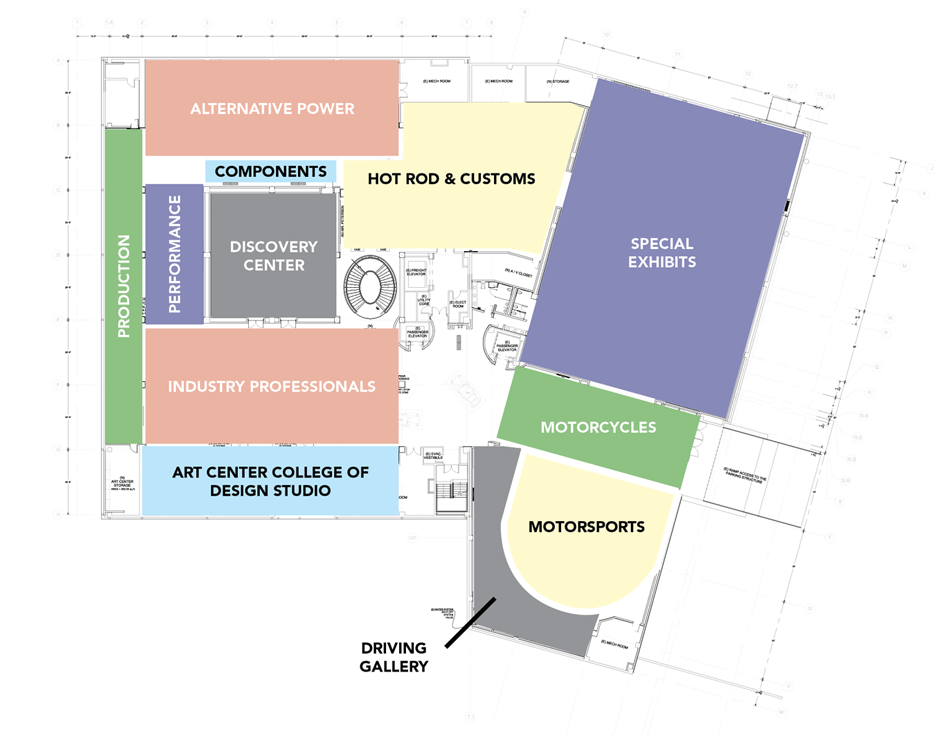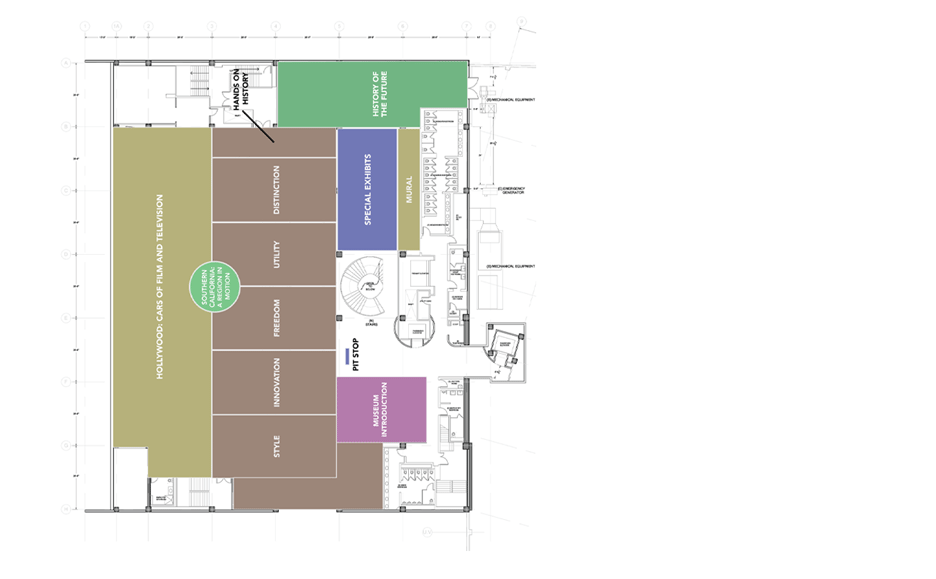LA's Petersen Automotive Museum reopens with KPF-designed metal-ribbon facade
The Petersen Automotive Museum in Los Angeles reopened this week following an extensive renovation, featuring a new wavy steel and aluminium facade designed by Kohn Pedersen Fox (+ slideshow).
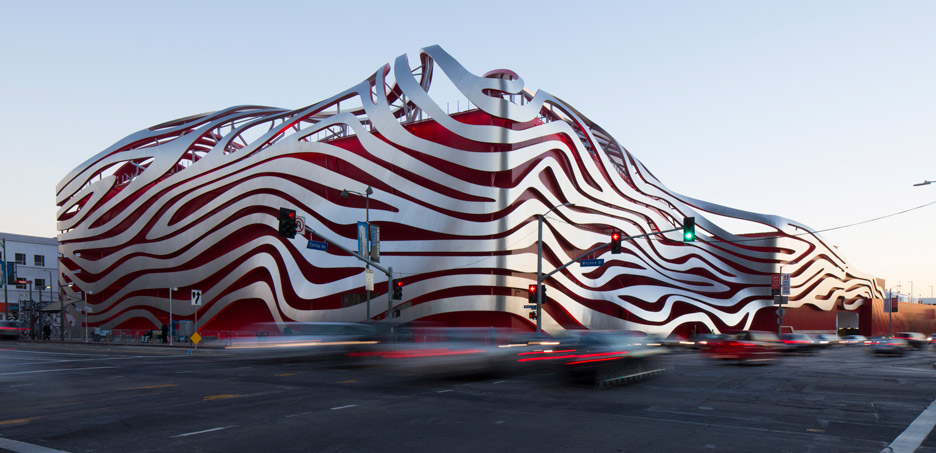
The museum, established in 1994, showcases championship-winning race cars, art cars, notable motorcycles, vehicles from Hollywood films, and other memorable vehicles.
It occupies a former department store on Museum Row in downtown LA, which was built in 1962 and designed by Welton Becket, a well-known contemporary LA architect who died in 1969.

Global firm KPF was commissioned to revamp the building's exterior, while local studio The Scenic Route was tasked with updating the interior.
The building is now wrapped in a total of 308 metal ribbons, each uniquely designed. The front and bottom surfaces are made of stainless steel, while the back and top surfaces are made of textured aluminium coated with "hot-rod red" paint.
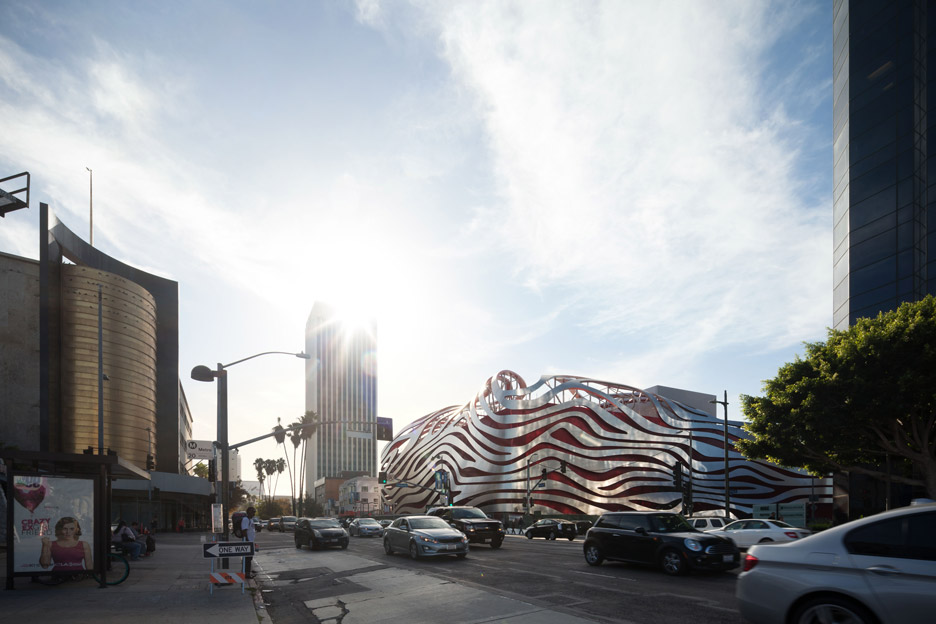
"I am proud to announce that the new Petersen Automotive Museum is open on schedule, on budget and with interior and exterior designs that are even more stunning then the concept renderings – and that is a rare feat in both the architecture and museum worlds," said Terry Karges, the museum's executive director.
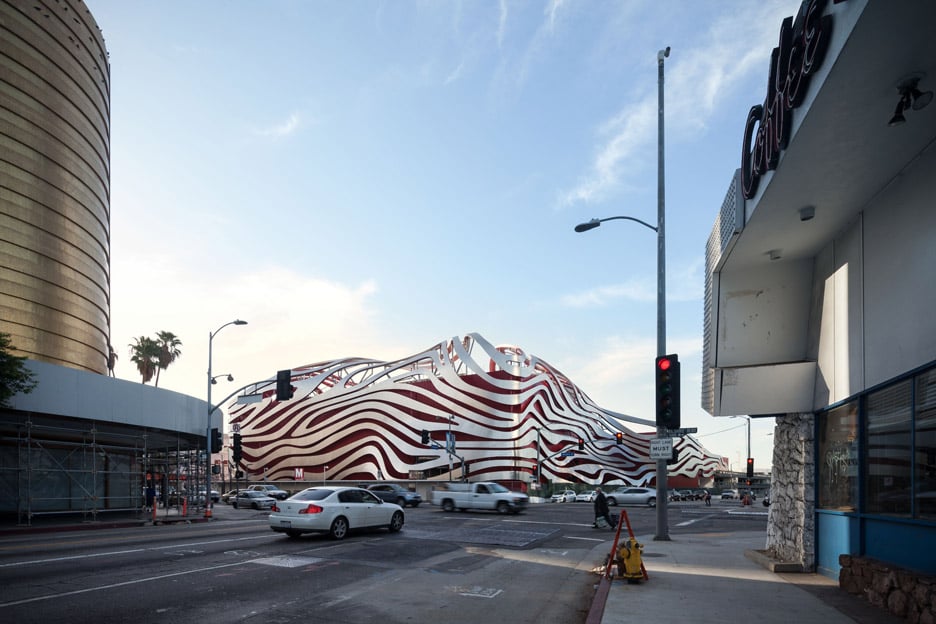
"We have transformed a building that was once an old department store into one of the most groundbreaking structures in Los Angeles," Karges added. "What's inside is just as stunning, including a three-storey spiral staircase that transports visitors through 25 galleries representing the history, industry and artistry of the automobile."
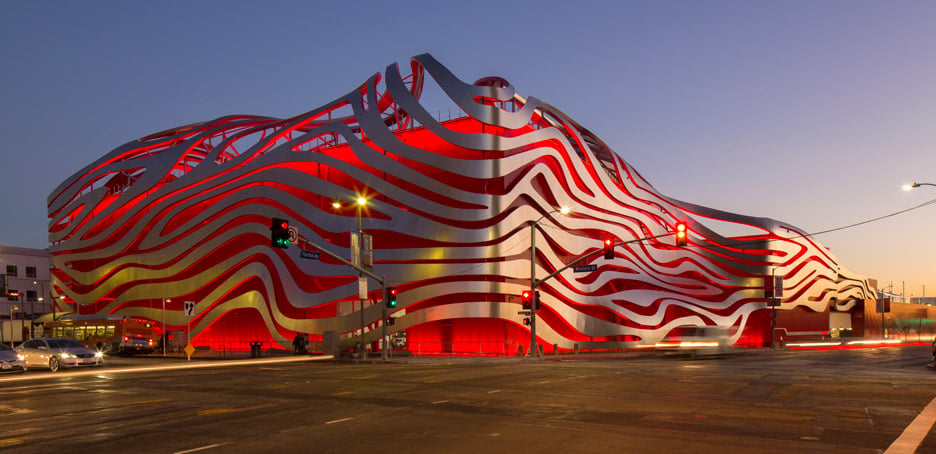
The new facade is supported by 25 vertical tubular steel supports and horizontal beams. Custom-designed stainless steel screws – 140,000 in total – were fabricated for the project to imitate the appearance of early 20th-century automobile fasteners.
The exterior is illuminated by 866 individually controlled LED fixtures.
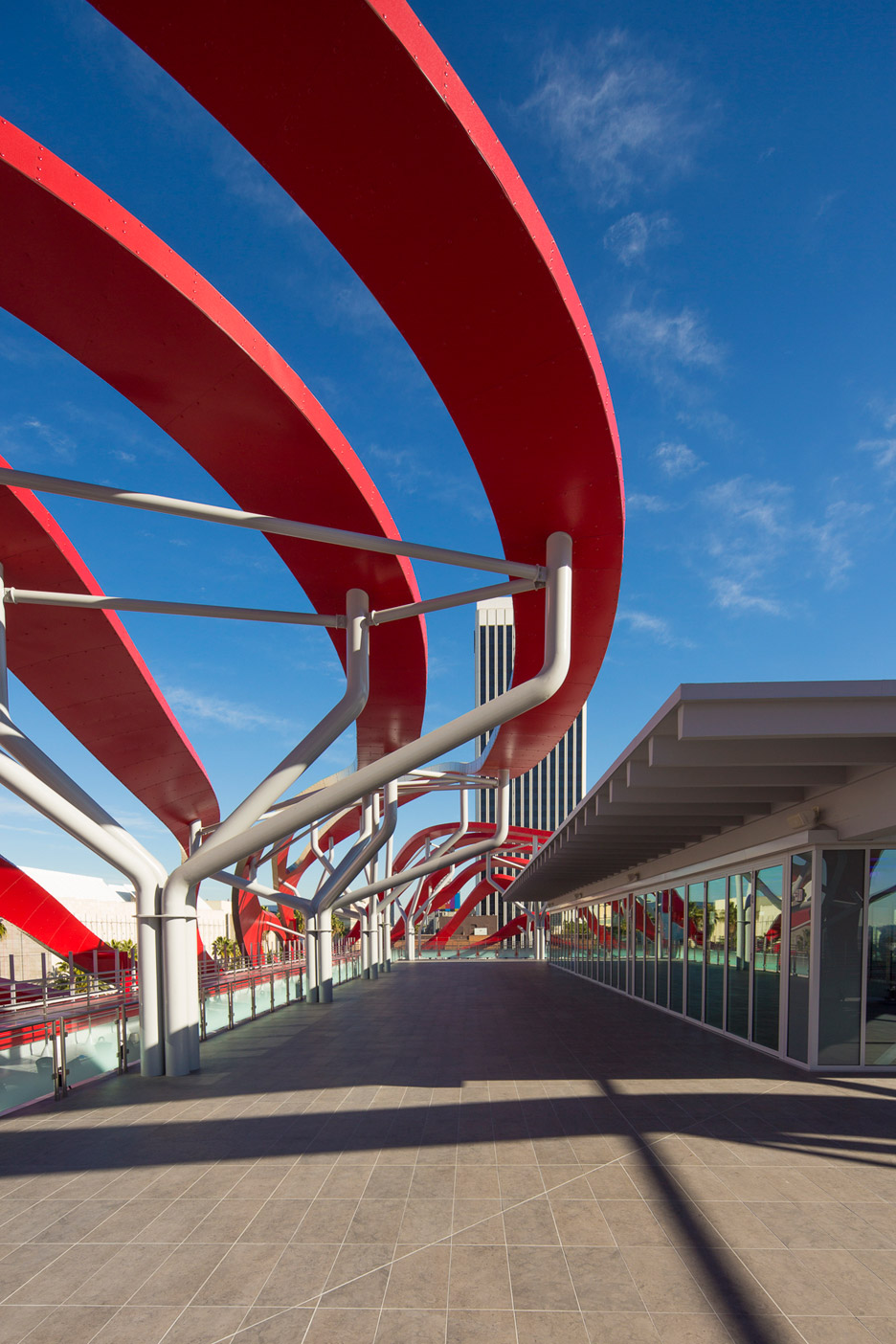
Inside, the museum's exhibition space totals 95,000 square feet (8,825 square metres), over three storeys.
The visitor experience is intended to begin on the top storey, which is dedicated to the history of the automobile. Pieces on view includes concept cars from the 1950s and 1960s, the Batmobile from the Batman comics, and the red Ferrari that Magnum PI drove in the 1980s TV series.
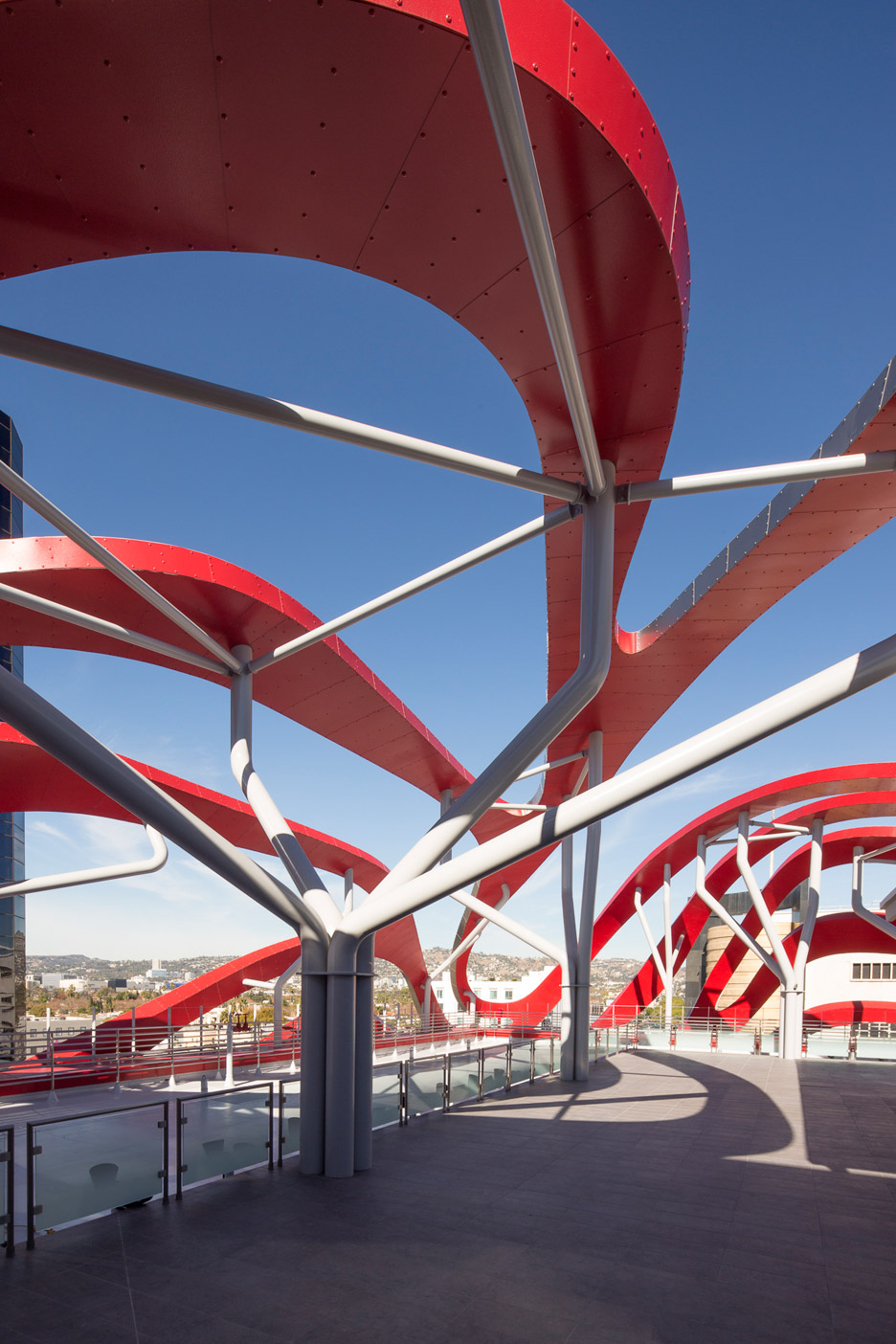
The upper floor also showcases the exhibition Southern California: A Region in Motion, which uses interactive videos to demonstrate how LA "grew out, instead of up, like most cities".
The middle level, named the Industry Floor, presents a series of exhibits related to design, technology and production.
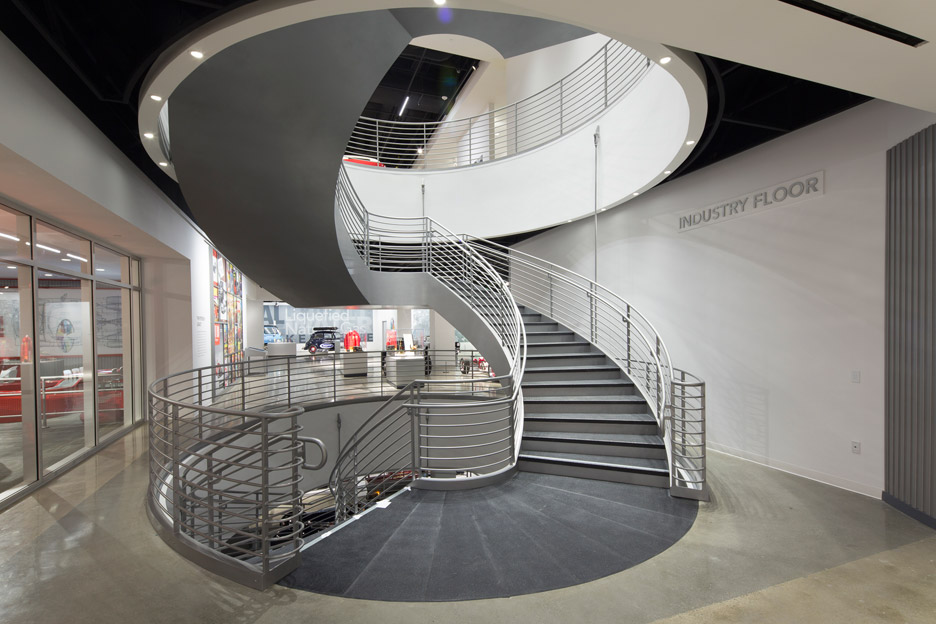
Visitors can see a collection of the world's rarest cars, all finished in silver, including a 1995 McLaren F1 and a 1964 Aston Matin DB5 driven by James Bond in the film Goldfinger.
Also on this level is a life-size version of Lighting McQueen, the racing vehicle featured in the animated movie Cars, and an Alternative Power exhibit, which showcases the history and future of alternative fuel vehicles.
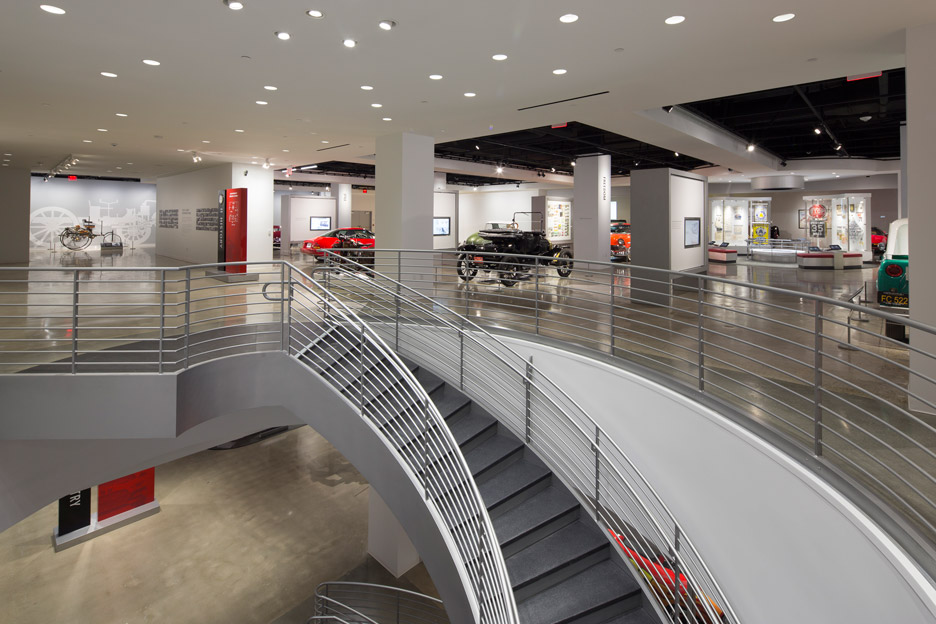
Other exhibits on this floor include Made in Italy: Design to Line, which demonstrates how luxury cards go from rendering to reality, and Motorsports, which presents some of the fastest and most seminal race cars of all time. The Motorsports display area features a 134-foot (40 metres), 180-degree projection wall, which immerses visitors in the race-track experience.
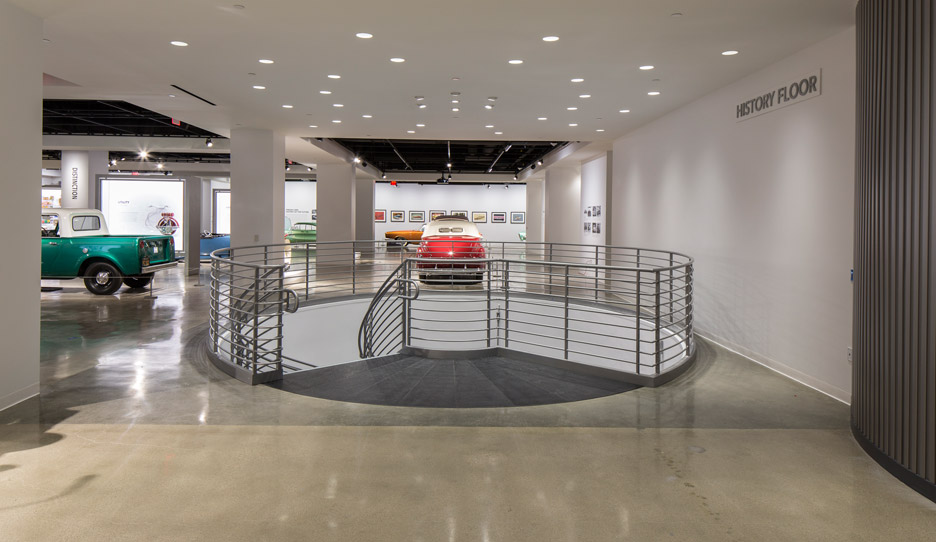
The ground floor features "artfully designed vehicles from history, often regarded as rolling sculpture". The Artistry of the Automobile exhibition features coach-built cars from the Art Deco era and a 166-foot (50 metres) display wall with motion graphic art inspired by the golden ratio, a geometric relationship favoured by many designers.
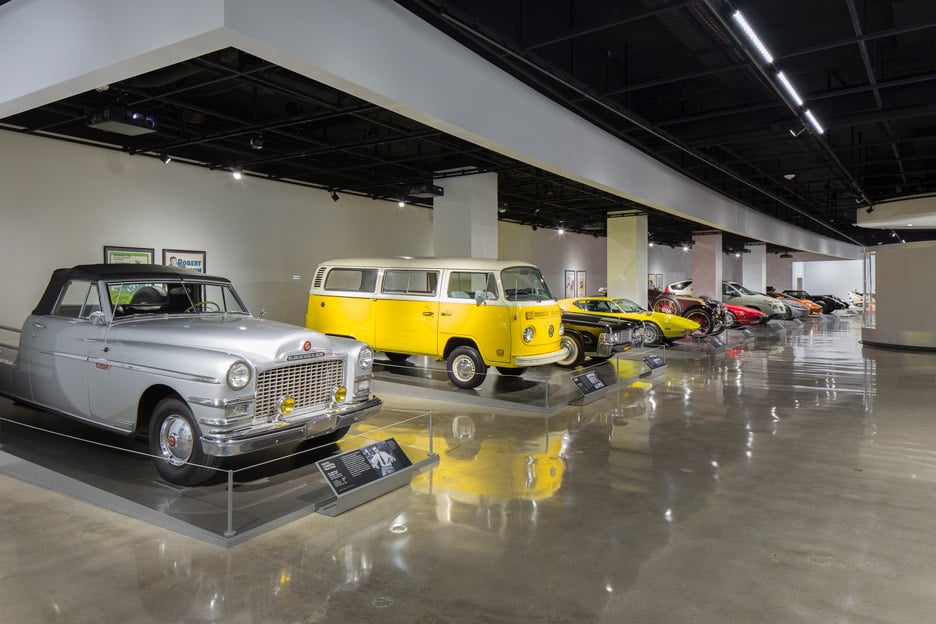
Also on the ground level is the BMW Art Cars exhibition, which includes the first car created within the series: a 1975 BMW 3.0 CSL painted by American artist Alexander Calder.
Additionally, a shop, restaurant and offices are situated on this floor.
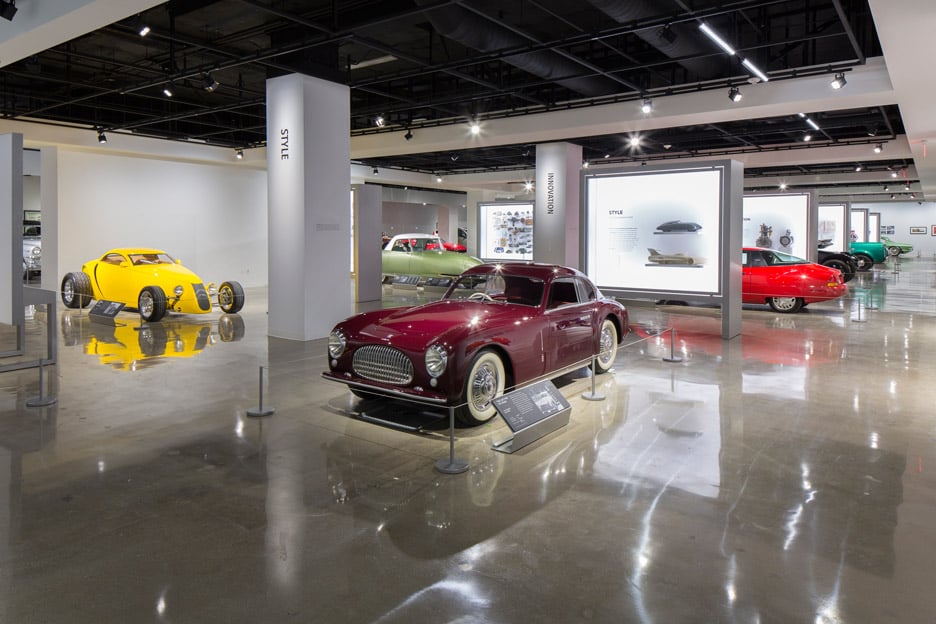
The museum is located at the gateway of LA's famed Museum Row, which features buildings such as the Los Angeles County Museum of Art (LACMA), originally designed by William Pereira, with additions and renovations by Hardy Holzman Pfeiffer Associates, Bruce Goff, Renzo Piano, and others.
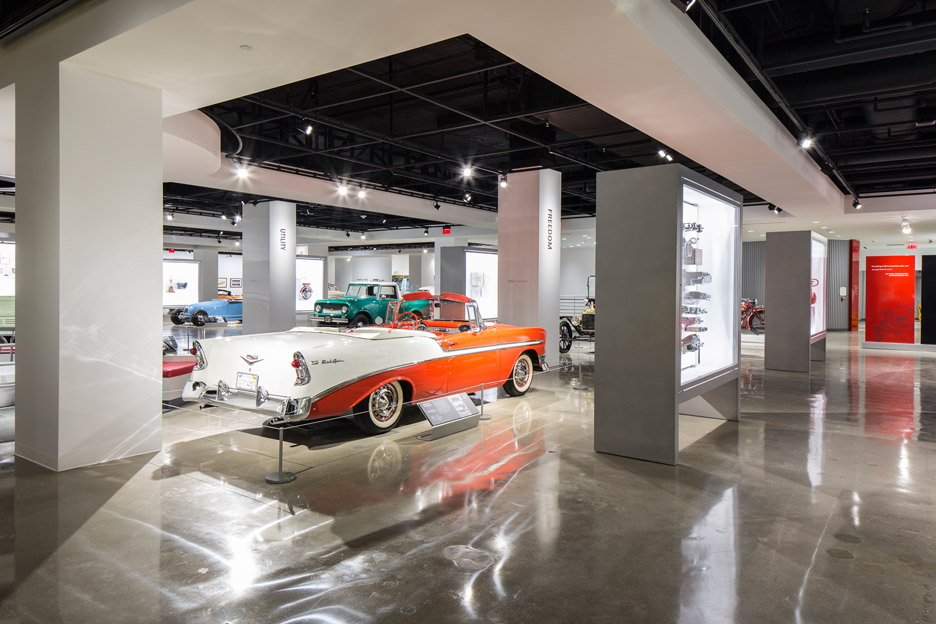
Piano has designed a museum for the Academy of Motion Pictures Arts and Sciences, which is slated to rise on Museum Row. The project, unveiled in 2012, received approval from the city council this summer, according to reports.
LA is in the midst of a construction boom, with many saying the Californian city has become the hottest destination in the US for architects.

Recently completed projects include The Broad art museum by Diller Scofidio + Renfro, which opened in September. In Beverly Hills, Chinese firm MAD is planning its first US project – a residential block modelled on a hilltop village.
LA resident Frank Gehry has several significant projects underway. On Grand Avenue, he has designed a mixed-use development opposite his Walt Disney Concert Hall. He is also masterplanning an overhaul of the run-down LA River, and has unveiled plans for a five-building complex on Sunset Strip.
Images courtesy of Petersen Automotive Museum.
